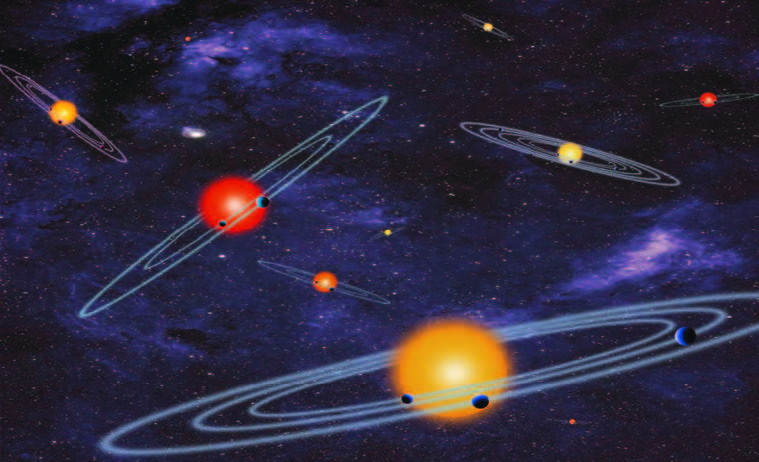
NEW DELHI (TIP): Using a new instrument developed with Indian collaboration, Nasa astronomers have discovered a planet 136 light-years away which is attached to four parent stars. They also discovered another planet in the care of a three star family.
The discoveries were made using the new Robo-AO adaptive optics system, developed by the Inter-University Center for Astronomy and Astrophysics located in Pune, India and the California Institute of Technology in Pasadena. This new system, along with the PALM-3000 adaptive optics system, developed by Nasa’s Jet Propulsion Laboratory in Pasadena, California, and Caltech are fitted to telescopes at the Palomar Observatory in San Diego.
The four star system called 30 Ari is located in the direction of the constellation Aries. While the planet itself was known before, it was thought to have only three stars, not four. The new instruments helped scientists discover the fourth parent star.
This is only the second time a planet has been identified in a quadruple star system. The first four-star planet, KIC 4862625, was discovered in 2013 by citizen scientists using public data from Nasa’s Kepler mission.
“Star systems come in myriad forms. There can be single stars, binary stars, triple stars, even quintuple star systems,” said Lewis Roberts of JPL, lead author of the new findings appearing in the journal Astronomical Journal. “It’s amazing the way nature puts these things together.”
The system’s gaseous planet is enormous, with 10 times the mass of Jupiter, and it orbits its primary star every 335 days. The primary star has a relatively close partner star, which the planet does not orbit. This pair, in turn, is locked in a long-distance orbit with another pair of stars about 1,670 astronomical units away (an astronomical unit is the distance between Earth and the sun). Astronomers think it’s highly unlikely that this planet, or any moons that might circle it, could sustain life.
Were it possible to see the skies from this world, the four parent stars would look like one small sun and two very bright stars that would be visible in daylight. One of those stars, if viewed with a large enough telescope, would be revealed to be a binary system, or two stars orbiting each other.
“About four percent of solar-type stars are in quadruple systems, which is up from previous estimates because observational techniques are steadily improving,” said co-author Andrei Tokovinin of the Cerro Tololo Inter-American Observatory in Chile.
The new planet with a trio of stars is a hot Jupiter that circles its primary star tightly, completing one lap every three days. Scientists already knew this primary star was locked in a gravitational tango with another star, about 0.7 light-years away, or 44,000 astronomical units. That’s relatively far apart for a pair of stellar companions. The latest discovery is of a third star in the system, which orbits the primary star from a distance of 28 astronomical units — close enough to have influenced the hot Jupiter’s development and final orbit. The fourth star lies at a distance of 23 astronomical units from the planet.




Be the first to comment